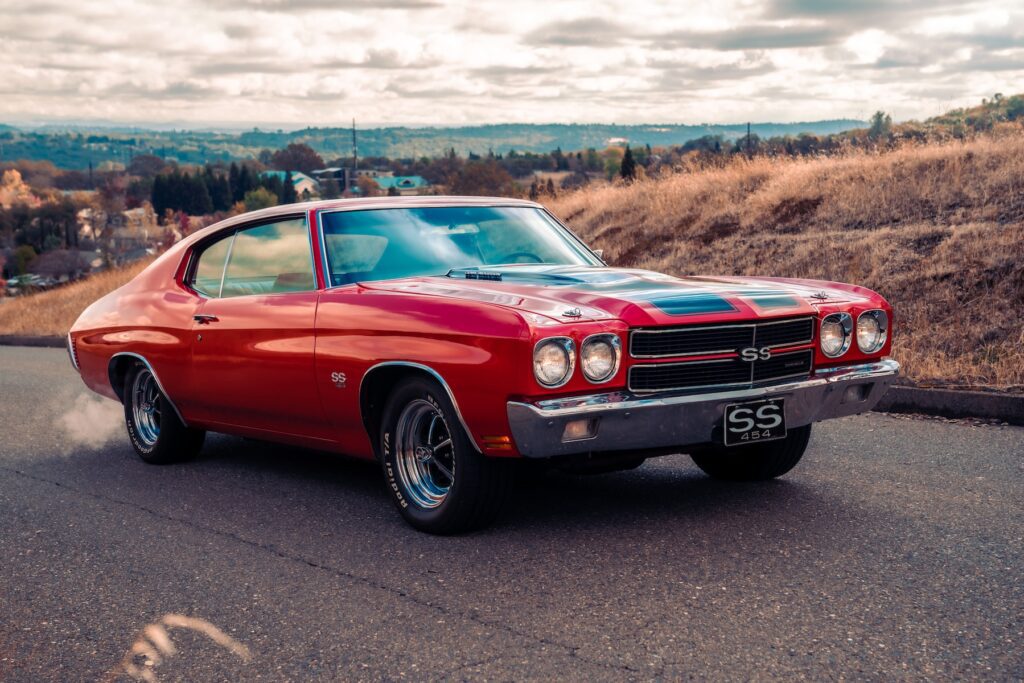
Shipping a classic car requires more than just booking any auto transport service—it demands meticulous planning and careful execution. Classic cars, often considered prized possessions, hold not only financial value but also emotional and historical significance. Whether it’s a vintage muscle car, a rare collector’s item, or a restored antique, ensuring that it arrives in pristine condition is the top priority for any classic car owner.
Summary
Why Are Classic Cars Special When It Comes to Shipping?
Classic cars require special attention during transport due to their unique characteristics. Unlike modern vehicles, which are built with standardized parts and readily available replacements, classic cars often feature rare, irreplaceable components that need extra care. The combination of fragile bodywork, custom parts, and vintage craftsmanship makes shipping a classic car a more delicate process.
For many owners, the value of a classic car isn’t just in its price—it’s in the history, the memories, and the time invested in its upkeep or restoration. This is why selecting a specialized transport service becomes crucial. Shipping companies experienced in classic car transport know how to minimize the risks associated with handling these vehicles. They use industry-specific practices such as secure tie-downs, padded straps, and enclosed trailers to ensure that the car remains safe from external elements like weather or road debris.
What makes a classic car vulnerable?
Classic cars are often more susceptible to damage because their materials are less durable than those found in modern cars. For example, the paint on a vintage car can be more fragile, and exposure to harsh weather during transit could lead to fading, scratches, or rust. Additionally, classic cars may have fragile or custom parts that are difficult or impossible to replace. Any impact or rough handling during loading, unloading, or transport can result in significant damage.
On top of that, many classic cars feature intricate details that demand careful attention. Chrome accents, custom interiors, and other aesthetic details are often expensive and time-consuming to restore if damaged. Choosing the right shipping method and a trusted transport company is key to avoiding such risks.
Choosing the Right Auto Transport Company for Your Classic Car
Shipping a classic car isn’t just about finding a company that can move vehicles—it’s about finding the right company with experience, specialized equipment, and a solid reputation for handling valuable and delicate automobiles. Choosing a transport company that understands the nuances of classic car shipping will help ensure your car arrives safely and in the same condition it was when it was loaded.
A professional auto transport company with a focus on classic cars will know how to mitigate risks like weather exposure, road debris, or mishandling. They will offer transport options that suit your vehicle’s specific needs, such as enclosed transport, which shields your car from the elements and provides a higher level of security.
What to Look for in an Auto Transport Company?
There are several key factors to consider when selecting an auto transport company for your classic car. First and foremost, check the company’s reviews and reputation. Look for testimonials from other classic car owners who have used their services. A company with a proven track record in handling high-value vehicles is far more likely to take the necessary precautions.
Insurance is another crucial aspect. Make sure the company offers comprehensive insurance that covers any potential damage that may occur during transit. Ask for a copy of their policy and ensure you understand what is covered before proceeding.
Equipment also plays an essential role. The company should use specialized trailers designed for classic car transport, including features like soft tie-downs, padded protection, and hydraulic lifts to prevent damage during loading and unloading.
Should You Opt for Enclosed or Open Car Transport?
For classic car shipping, enclosed auto transport is generally the preferred option. It provides a secure, fully covered trailer that shields the car from road hazards, weather, and prying eyes. Although it can be more expensive than open auto transport, enclosed car transport is worth the extra cost when it comes to safeguarding a valuable classic car.
Open car transport, while cheaper, leaves the car exposed to the elements, making it more susceptible to dirt, rain, and potential damage from debris on the road. For everyday vehicles, open auto transport is often sufficient, but for classic cars, enclosed car transport offers peace of mind that the vehicle will arrive at its destination in perfect condition.
Prepping Your Classic Car for Transport
Preparing your classic car for shipping is a vital step to ensure it arrives at its destination in pristine condition. Taking the time to properly prepare the vehicle not only helps prevent any issues during transport but also makes the process smoother for the auto transport company. Prepping includes everything from performing a thorough inspection to securing any loose or fragile parts on the car.
How to Inspect Your Car Before Shipment?
Before your classic car is handed over for transport, it’s crucial to perform a comprehensive inspection. Start by documenting the current condition of your vehicle. This includes taking detailed photos from multiple angles, capturing close-ups of any existing scratches, dings, or imperfections. If your car has any custom or delicate features, make sure to photograph and note those as well. These records will serve as a reference point should any disputes arise about the condition of your vehicle upon delivery.
Additionally, check all fluid levels, including oil, coolant, and brake fluids. Overfilling can lead to leakage during transit, so ensure these are at the proper levels. It’s also a good idea to top off the fuel tank, but only about a quarter full—this is the recommended amount for transport to prevent unnecessary weight or hazards during transit.
What Additional Precautions Should You Take?
For classic cars, there are several unique precautions you can take to avoid any damage. First, if your vehicle has any removable parts, such as antennas, spoilers, or mirrors, consider removing or securing them to avoid potential breakage during transport. You may also want to cover any exposed elements with padded protective materials to reduce the risk of scratches or dents.
It’s also recommended to deactivate the car alarm if you have one. The vibrations from transport can set off alarms unnecessarily, causing distractions and delays for the transport team. Finally, ensure that the tires are properly inflated, and there are no leaks in the car. Low tire pressure can make the car difficult to load or unload, while leaks may damage the trailer.
Case Study: Successful Classic Car Shipping with Navi Auto Transport
At Navi Auto Transport, we pride ourselves on delivering exceptional service, especially when it comes to classic car shipping. A recent client, George from Illinois, trusted us to transport his 1967 Ford Mustang, a beautifully restored classic car that held both sentimental and monetary value. George had invested significant time and money into bringing the car back to its original glory, so the safety of his vehicle during the shipping process was a top priority.
After thoroughly researching various auto transport companies, George chose Navi Auto Transport due to our reputation for handling delicate, high-value vehicles. He opted for enclosed transport to shield the Mustang from any weather-related or road hazards during its journey from Illinois to Florida.
How We Solved the Challenge
The key concern George had was ensuring that his Mustang would arrive in the same pristine condition as when it left his garage. After a thorough pre-shipment inspection, our team documented every detail of the vehicle’s condition. To address his concern, we used a specialized enclosed trailer equipped with padded tie-downs and hydraulic lifts, ensuring that the vehicle was loaded and unloaded with the utmost care.
Throughout the journey, George received real-time updates on the car’s location, providing peace of mind. The car arrived on time and in perfect condition, just as promised. George was delighted with the seamless service and shared his experience with others, highlighting the professionalism and dedication of our team.
Common Issues with Classic Car Shipping and How to Solve Them
Shipping a classic car can come with its own set of challenges. From delays to damage, understanding potential issues and knowing how to address them can make a significant difference in ensuring a smooth transport process. Here’s a look at common problems encountered during classic car shipping and effective solutions to mitigate them.
How Can Delays Be Avoided?
Delays in car shipping can be frustrating, especially when you have a tight schedule. One of the main causes of delays is poor communication between the transport company and the car owner. To avoid this, establish clear communication channels with your transport provider. Confirm pickup and delivery dates in advance and ask for regular updates on the status of your shipment. Additionally, be flexible with your schedule if possible. Weather conditions, road closures, or other unforeseen circumstances can sometimes affect transport timelines.
Another tip is to plan ahead and book your transport service well in advance. Last-minute arrangements can lead to rushed processes and potential delays. By planning ahead, you can ensure that all logistical aspects are handled smoothly.
What If Your Classic Car Arrives Damaged?
Despite all precautions, there is always a slight risk of damage during transit. If your classic car arrives with any damage, take immediate action. Begin by documenting the damage thoroughly with photos, noting the specifics of how it occurred. This will be essential for any insurance claims or discussions with the transport company.
Ensure you inspect the vehicle upon delivery before signing off on the paperwork. If you notice any issues, report them to the transport company and file a claim with your insurance provider if necessary. Many transport companies, including Navi Auto Transport, offer comprehensive insurance coverage for such situations, so make sure you understand your policy and coverage before shipping.
